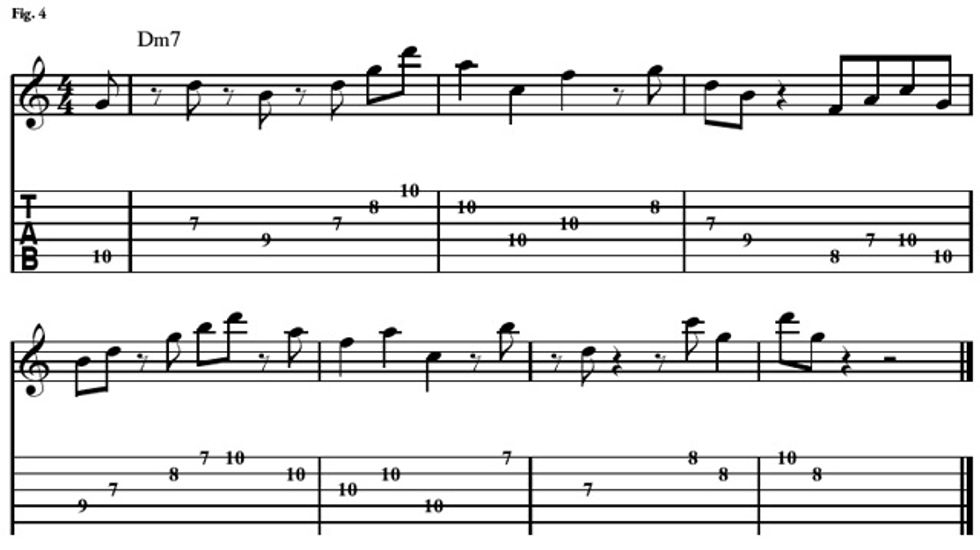Using triad pairs is simply an intervallic approach to improvisation. When used correctly, the technique can generate some very interesting sounds.
Using triad pairs is simply an intervallic
approach to improvisation. The concept
is fairly basic, and it’s fun and challenging
at the same time. When used correctly, the
technique can generate some very interesting
sounds. Let’s get started.
First, we need to define what triad pairs
are. You can think of them in simple terms
as a pair of triad arpeggios that will be used
for improvising. But how do we know which
ones to use? Basically, any two triads generated
from a diatonic scale that are next to
each other are a good choice. For this lesson
(and believe me this is just the tip of the
iceberg), we use F and G triads to solo over a
Dm7 vamp. The default scale for playing over
minor-7th chords in jazz is the Dorian mode.
In this example, we’ll select D Dorian, which
contains the same notes as the C major scale.
The triads in the key of C major are C, Dm,
Em, F, G, Am, and Bdim. So all we have done
is select two triads that are the same quality
(major) and occur next to each other in the
scale. So F and G are a great choice. The notes
from these two arpeggios are F–A–C (F triad)
and G–B–D (G triad).
What’s cool about this concept is that if
you play lines that use the notes from these
two triads in sequence, you will end up playing
six of the seven diatonic notes from the
scale without repeating any other notes. Also,
you will generate lines with fairly wide intervals
(lots of thirds and fifths) that are typical
in modern jazz improvisation.
Watch the video lesson:
The first thing you need to do is get a grip
on these triads, and all their inversions, everywhere
on the fretboard. This is where you will
find out how well you understand triads. If
you struggle with this at first, that’s okay. Take
your time and master the arpeggio shapes.
Basically, there are two ways to approach this
on guitar. Every guitarist should be able to
play every triad with horizontal movement
and vertical movement. Horizontal movement
goes up and down the fretboard staying on the
same string set and vertical movement stays in
position while playing through the triads and
their inversions. Check out and Fig. 1andFig. 2
to see how to use these two movements.


The following examples show how to organize the notes in these triads to create some interesting ideas. One byproduct of this technique is that your solos will sound more compositional, because motivic ideas and development will naturally start to occur. Motivic development creates form, and this sounds distinctly different from mindlessly running through a scale or playing some melody that doesn’t really seem to have a destination.
Both Fig. 3 and Fig. 4 combine a more melodic approach with some syncopated ideas, and demonstrate how these techniques can give your improvisation a very compositional quality. In Fig. 5, I use the inversions of the F and G triads to move up the neck and I add an Eb passing tone in the last measure. Download example 3 audio...

Download example 4 audio...

Download example 5 audio...

Basically, this concept is just a way to break out of running scales and playing scalar lines. It also forces us to be very accurate with our note choices, and in many cases will expose how little we actually understand the fretboard and triad shapes (with their inversions) across the fretboard. Good luck and have fun!
Corey Christiansen, a former senior editor and guitar clinician for Mel Bay Publications, is known for his fluid jazz improvisation and instructional chops. He teaches full-time at Utah State University and is an Artist-in- Residence at the Jacobs School of Music in Bloomington, Indiana, the Atlanta Institute of Music, and the Broadway Music School. To learn more about his CDs and DVD, and see his current workshop and performance schedule, visit coreychristiansen.com.

